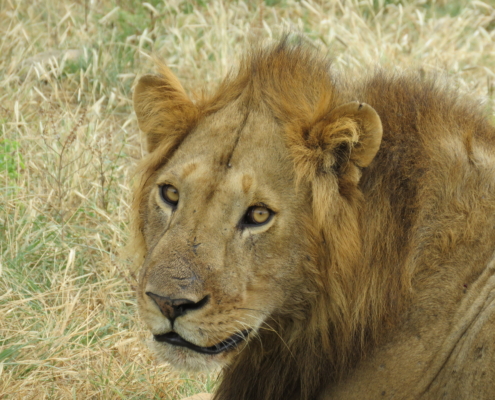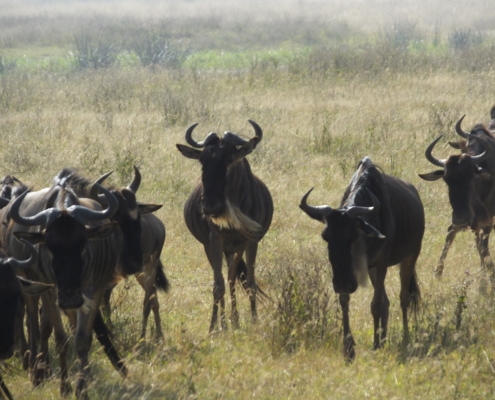Are you wondering when to come on Safari in the Serengeti?
Many people will tell you that the best time to come is between July and October. This is indeed the dry season, which means that animals go looking for water, which makes them relatively easy to spot. And you will see them in denser concentrations because the number of watering holes and rivers is limited. Many watering holes dry up or get smaller during the dry season. However – and this is a big however – because most people believe that July to October is the best time to come, it is also the busiest time in the Serengeti. This means that many people miss the treasures that can be found at other times of the year.
When we ask our guides their favorite times to take guests on safari, the answers vary.
“January is a great time to see cheetah near the Big Marsh, the huge pride of lions in the Hidden Valley, and leopards near the Makao plains; it’s always exciting.”
“May in Ndutu is a great time to see the big cats and predators.”
“Seeing hundreds of thousands of wildebeest calving on the plains in February is extraordinary!”
“Bird watching in Tarangire is at its best from November to April”
“Nothing I have ever seen compares to the excitement of watching the Great Migration wildebeest crossing the Mara river in August or September.”
As you can see, there isn’t one best time of year to come. Here’s a brief overview of what the year looks like in the Serengeti:
January to March
This is the time to enjoy the wildebeest migration mostly in the Southern Serengeti from Naabi Hill Gate to the Ndutu area, and further down to Kasini. Exact locations for best viewing of the migration vary with each rainy season as the migration moves according to the rains. Sometimes the biggest herds will be found in the Gol Kopjes, just a bit north of the Naabi Hill Gate. At some point between January and March, calving occurs in the Ndutu plains (generally mid-January to February). This is a massive spectacle as hundreds of thousands of wildebeest drop their calves, with predators on the alert. This is also a good time for birding in Tarangire National Park or other National Parks.
April and May
The best places to go during this time depend somewhat on the timing of the rainy season in any particular year. Some of the Great Migration wildebeest herds will still be in parts of Ndutu (like the Makao plains or the Big Marsh plain) and some will be spread out from the Naabi Hill Gate up to the central Serengeti, and slowly heading into the Western Serengeti region. This time in the Ndutu area is known as the predators season; if you really want to see big cats – and particularly big cats with their young – this is an amazing time to come!
June and July
The best places to see the Great Migration in June and July are usually in the Western Serengeti; along the Grumeti River, in the Nyasirori Plains, and sometimes in the Lobo area. This is also a great time to explore the Central Serengeti and Seronera areas, which will be rich in all sorts of animals, including predators. Leopards, lions and cheetah abound.
August to October
This is an exciting time in the Serengeti (and one of the highest seasons for visitors!). The grasses are relatively dry and animals gather around sources of water, so are plentiful and easy to spot. If you’re looking to experience the highlights of the Great Migration, you will want to head up north, to the Mara section of the Serengeti near the Kogatenda airstrip. There are many luxurious tented camps up here at this time of year, and you can see the wildebeest herds crossing the Mara river, with hippos and crocodiles lying in wait!
November and December
While Christmas is the highest season to travel in Northern Tanzania, November and December other than the holidays are relatively quiet times to come, but there’s still a lot to see! If you want to see the Great Migration herds, we’re likely to find them along the Mara river; crossing back from Kenya, with the females, in particular, heading down towards the Ndutu plains where they will give birth in the new year. The males linger behind them making their way down slowly. This is a lovely time to travel as there are generally fewer tourists so you have a quieter experience while wildlife is still plentiful.




